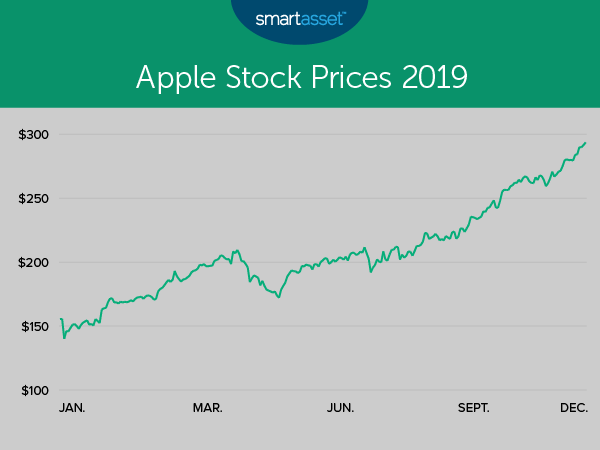Random walk theory holds that short-term and mid-term price movements of a specific stock appear to be random and thus are unpredictable. Using a share price’s past movements, for example, is an unreliable means of projecting its future direction. Understanding random walk theory can help retail investors focus their investment strategy.
A financial advisor can help you create a financial plan for your needs and goals.
What Is Random Walk Theory?
In statistics, “random walk” describes the seemingly random movement of a variable. It doesn’t have any known relationship with historic values or other variables, nor does it have any identified pattern. The variable simply changes, then changes again. There may be a pattern or relationship of the variable’s movement to some other factor or factors. However, such a pattern or relationship has not been identified.
For investors, the random walk theory, popularized by Princeton University Economics Professor Burton Malkiel in his book “A Random Walk Down Wall Street,” maintains that a share price, which is the variable, moves seemingly at random, akin to how a drunk person might walk down the street. It doesn’t have any known relationship with historic values or other variables, nor does it have any identified pattern. However, the theory does not exclude the possibility that a share price’s movement conforms to a pattern or has a relationship to other factors.
Most proponents of the random walk theory apply it to short- and mid-term trading. They don’t argue that long-term values move unpredictably. Those follow trends. However daily, weekly and even monthly stock prices have no consistent basis for prediction. We can see this in practice by looking at the graph below of Apple shares’ price movement last year.

Over a year of trading Apple shares rose, roughly doubling over 12 months of trading. Yet consider its day-to-day pricing. The stock closed down almost as often as it closed up. On March 21 Apple opened at $190.02 and closed at $195.09. The next day it lost almost all of that value by close of business and didn’t bounce back to $195 until April 3. Later that month share prices swung within a range of $200 and $211 over a seven-day period, before Apple’s stock lost value for almost all of May and gained value for almost all of June.
This is exactly the kind of behavior that the random walk theory tells investors to expect. Looking at Apple, one of the most successful companies in the country, we can select any short-term range of dates and find traders who took a loss, traders who took a gain and traders who broke even. There is little, if any, consistency to share prices across a daily, or even monthly, set of prices. Yet over the 12-month period a trend emerges. The company did quite well in 2019, but to have invested in that success a trader would need to have held onto the stock for months at a time, if not the whole year.
Random walk theory is consistent with, but distinct from, efficient market theory, which holds that a security’s price reflects all relevant and known information about that asset. Both random walk and efficient market theories asserts that, on a risk-adjusted basis, you can’t consistently beat the market.
Applying Random Walk Theory

Random walk theory argues that the only consistently successful approach to investing is a strategy of buy and hold. Long-term investment allows you to take advantage of the stock trends that are predictable, which only emerge when you look at the market over a period of years. Better still, random walk suggests, an investor should focus on collected assets such as mutual funds and ETFs. Doing so lets you eliminate the inherent unpredictability of individual stocks in the short-term and mid-term.
Random walk theory is incompatible with several well-known investment strategies, in particular:
- Technical analysis. This approach to investing holds that you can profit by analyzing the price of a stock relative to its historic price and the prices of other, similarly situated assets. Random walk theory argues that there are no such relationships known.
- Market timing. Advocates of market timing assert that you can time your buy and sell orders to best capture an asset’s value (buy low, sell high, for example). Random walk theory argues that since stock prices move at random, there is no way to correctly predict entry and exit points. Attempting to time a specific stock’s movement creates risk disproportionate to any given reward, meaning that a market timing strategy will tend to lose money over time.
- Fundamental analysis. This strategy focuses on key financial metrics of a company, not primarily its share price movement, to gauge its value. But random walk theory argues that the unreliability of corporate data and the likelihood that even reliable data will be misinterpreted render fundamental analysis unsuccessful.
Pros and Cons of Random Walk Theory

The theory is often borne out in the short term. Active fund managers rarely outperform the market, and the number who do appears to be shrinking as computer technology makes markets ever more efficient. This supports the theory’s core premise that picking individual stocks and short-term investing tends to generate risk disproportionate to reward.
In the long term, however, the theory loses credibility. The success of long-term investing highlights the essential limitation of random walk theory: stock prices do follow a trend toward predictable outcomes. If stock prices moved in an entirely random fashion, the history of the stock market would look like a scatter plot without pattern. Indices like the S&P 500 and the Dow Jones Industrial Average would be as likely to move down as up in any given year, and the market overall would trend toward net-zero gains and losses over time. This is observably untrue.
Bottom Line
Random walk theory says it’s impossible to predict how a stock will move at any given time. In the short- and mid-term, a stock’s price doesn’t have any known relationship with either its historic value or the value of any other assets on the market. The lack of any known pattern means that standard investing tools like market timing and technical or fundamental analysis don’t work.
Tips
- Consider talking to a financial advisor about random walk theory and its implications for your investment strategy. SmartAsset’s free tool matches you with up to three vetted financial advisors who serve your area, and you can interview your advisor matches at no cost to decide which one is right for you. If you’re ready to find an advisor who can help you achieve your financial goals, get started now.
- By spreading your money across a diverse range of assets and holding them for a long period of time you can eliminate the risks that come with unpredictability and get the benefit of big-picture trend lines. If you would like to learn more about long-term investing, check out this investor’s guide.
Photo credit: ©iStock.com/Chaay_Tee, ©iStock.com/Nikada, ©iStock.com/ktasimarr
